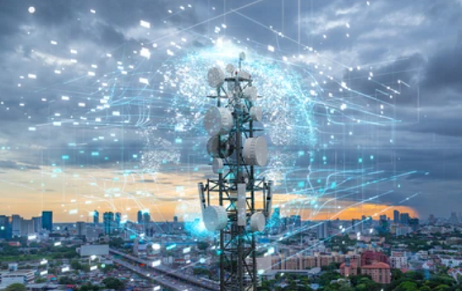Navigating the Telecommunications Terrain: An Examination of India’s Telecommunications Act 2023
Introduction
India is world’s second-largest telecommunications ecosystem globally with around 117 crore subscribers. The telecommunications sector employs around 40 lakh individuals and plays a significant role in contributing approximately 8% to country’s GDP. The earlier regulatory structure that governed this sector in India majorly revolved around 3 legislations that are namely:
- Indian Telegraph Act, 1885
- Indian Wireless Telegraphy Act, 1933
- Telegraph Wires (Unlawful Possession) Act, 1950
Since the enactment of these legislations, there has been a substantial transformation in the nature and usage of technologies that are being used for the purposes of telecommunication. In the present age, various advancement like 4G and 5G, Internet of things, Mobile Edge Computing have been made and they open fresh avenues for different socio-economic changes. Thereby, it becomes imperative to establish legal framework that aligns with the demands and realities of the 21st century.[1]In line with the same, the government recently brought the Telecommunications Bill, 2023, which has now become an Act.It recently received the assent of the President on 24 December 2023, after being cleared by both houses of parliament. This also leads to repealment of earlier 3 laws mentioned above.
Telecommunication Act 2023
1.Introduction
The major purpose of the Act is to amend and consolidate the law relating to development, expansion and operation of telecommunication services and telecommunication networks, assignment of spectrum, and for matters that are incidental to it. The Act also aims to streamline and clarify telecom regulations, and to remove impediments to network building. It also includes provisions to elevate user safeguards, counteract impersonation and to address issues related to fraudulent issuance of SIM cards.
A notable requirement under the Act is that the telecom service providers are obligated to verify user identity through verifiable biometric based identification. It also seeks introduction of a more detailed Know Your Customer (KYC) regime with more strict penalties for violators including imprisonment for a maximum of three years and fines reaching up to 50 lakhs. The Act also seeks to establish a centralised authorization system in a bid to replace the existing complex structure of multiple licenses. This would also help in the establishment of a more direct grievance redressal mechanism, encompassing a four-tier dispute resolution process.[2]
2.Digital Bharat Nidhi
Chapter V of the Telecommunications Act talks about establishment of Digital Bharat Nidhi, which has been defined as the Universal Service obligation Fund created initially under the Indian Telegraph Act, 1885. It is a reserve fund that is generated by levying 5% of the universal service charge imposed on telecom service providers such as Airtel, Jio etc.[3]
The sums that are received under this provision is first credited to the Consolidated Fund of India, from where the requisite amount is credited back into the Digital Bharat Nidhi. The proceeds of funds under this provision are to be exclusively utilised in promoting access and delivery of telecommunication services especially in rural and remote areas, supporting research and development in telecommunication services etc.[4]
[Image Sources: Shutterstock]
 3. Right of Interception by The Government
3. Right of Interception by The Government
The Telecommunications Act expands the authority to intercept communications without adequate safeguards. This is accomplished by giving the government the power to notify standards and conformity assessments encompassing the encryption and data processing in telecommunication.[5] The context for such interception may also be based on ground of National Security reasons.[6] An important concern that arises in this regard is the breaking down of encryption, which is an important tool for ensuring free-expression and privacy. There are also growing concerns over the future of third party end-to-end encrypted platforms like WhatsApp due to standard setting powers that have been conferred to the government. The usage of encryption in such platforms ensure that only the sender and the intended recipient can view the messages, with even the service provider not being able to view. Therefore, the Act, may confer powers to the executive for creation of backdoor mechanisms, traceability of messages or creation of blocking list for words.
The implications of these provisions become even more clearer, when one looks at the interception powers, which mandate disclosure of intercepted messages in an “intelligible format.”[7] There are no safeguards or exemptions that are granted to encrypted platforms in regard to this and the existing procedure under Rule 419-A of the Telegraph Act,[8] would continue to be followed.[9] This gives government control over any message or class of messages, to or from any person. This also includes enabling of identification of first originator of information over any platform.Thus, this could effectively be used for spying purposes.
4.Spectrum Allocation and Auction Process
The Act confers authority on the Central government to allocate spectrum through auctions, excluding specific cases detailed in first schedule of the Act. The central government is deemed to be owner of the spectrum on behalf of the people and it has the powers to prescribe terms and conditions for assignment of spectrum including determination of frequency range, methodology for pricing , price, fees, payment, mechanism, procedure etc.[10] The Act also makes way for government to administratively allocate Satellite broadband Spectrum rather than resorting to auctions. This administrative allocation of spectrum for the satellite companies is meant to be for point-point connections only and not for direct transmission of services to retail consumers.[11]
It is to be noted that, this is also the global norm for assigning spectrum for satellite broadband services and no precedent of auctioning such airwaves exists globally. Several areas have been delineated in the first schedule of the Act where the assignment of spectrum would occur administratively such as Digital Satellite News Gathering, Mobile Satellite service in L and S bands, telecom services provided by state-run entities such as Mahanagar Telephone Nigam Limited (MTNL)and Bharat Sanchar Nigam Limited (BSNL) etc. In this context, certain questions were also raised with regard to arisal of conflict with the Supreme Court’s decision in 2G spectrum case[12] in 2012 which had held that administrative allocation of spectrum by the government was not valid.However, in the present provisions the assignment is being done of the satellite spectrum which is different from the terrestrial spectrum which is generally used for mobile based communications.[13]
Conclusion
The Act is a progressive step towards repealing the colonial legislation of Indian Telegraph Act and embracing the new challenges that have arisen in the sector of telecommunications.However, it does contain certain drawbacks and confers excessive power to the executive authorities, which can possibly be misused. Only time will tell, what legal and constitutional challenges the Act would bring in future. Therefore, it is necessary for the government to acknowledge the shortcomings and bring relevant changes by way of suitable Amendments.
Author: Dhairya Kumar, in case of any queries please contact/write back to us via email to [email protected] or at IIPRD.
[1]‘The Telecommunications Bill, 2023’ (PRS Legislative Research, 28 December 2023) <https://prsindia.org/billtrack/the-telecommunication-bill-2023> accessed 28 December 2023
[2]‘Rajya Sabha Approves Telecom Bill 2023, Prioritizing User Protection and Structural Reforms’ (DD News) <https://ddnews.gov.in/national/rajya-sabha-approves-telecom-bill-2023-prioritizing-user-protection-and-structural-reforms> accessed 28 December 2023
[3]The Telecommunications Act, s 24
[4]The Telecommunications Act, s 25
[5]The Telecommunications Act, s 19(f)
[6]The Telecommunications Act, s 21
[7]The Telecommunications Act, s 20(2)
[8]The Telecommunications Act, s 61
[9]‘With Cleverly Drafted Telecom Bill, Government Tightens Grip on Digital India’ (The Wire) <https://thewire.in/government/cleverly-drafted-telecom-bill-government-tightens-grip-digital-india> accessed 28 December 2023
[10]The Telecommunications Act, s 4(3)
[11]India PT of, ‘Administrative Spectrum Allocation to Satcom Firms Only for Point-to-Point Connections’ (Outlook Business) <https://business.outlookindia.com/economy-and-policy/administrative-spectrum-allocation-to-satcom-firms-only-for-point-to-point-connections> accessed 28 December 2023
[12]Centre for PIL v Union of India 2013 8 SCC 18
[13]Barik S, ‘Telecom Bill Paves Way for Allocation of Satellite Spectrum’ (The Indian Express, 19 December 2023) <https://indianexpress.com/article/india/telecom-bill-paves-way-for-allocation-of-satellite-spectrum-9073632/> accessed 28 December 2023

 3. Right of Interception by The Government
3. Right of Interception by The Government

